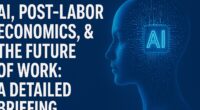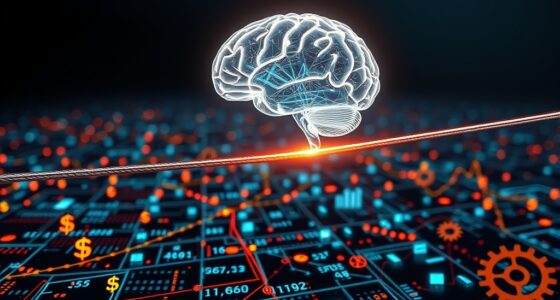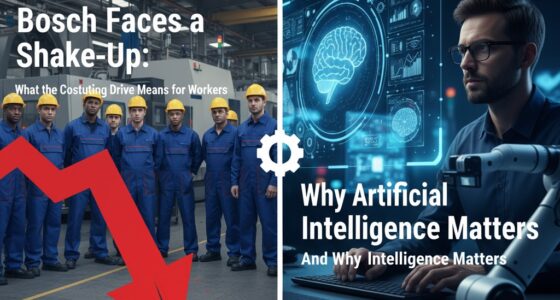Executive Summary
A recent study from Harvard, focusing on an AI’s inability to understand gravity despite perfect orbital prediction, has ignited a critical debate within the AI community regarding the nature of intelligence and the future direction of Artificial General Intelligence (AGI) development. The study highlights a “fundamental flaw” in current AI architectures: their tendency to memorize statistical patterns rather than extract underlying principles, a phenomenon dubbed the “pattern matching trap.” This finding challenges the prevailing “scaling approach” championed by many major tech companies, suggesting that simply pouring more computational power and data into existing large language models (LLMs) will not lead to genuine understanding. Leading AI figures like Yann LeCun, Meta’s Chief AI Scientist, are openly challenging the efficacy of current transformer-based systems, advocating instead for “world models”—architectures designed to build internal representations of reality and understand causality. This sets up a crossroads for AI research, with three competing paths emerging: continued scaling, enhanced “test time compute” for better reasoning, and the revolutionary “world model” approach, which Google DeepMind is reportedly heavily investing in. The core question is whether AI can move beyond prediction to achieve true comprehension, a distinction vital for reliability, safety, and the realization of human-level AI.
Key Themes and Insights
The “Orbital Prediction Paradox”: Prediction vs. Understanding
The Harvard study, led by Cavan Vafa, demonstrates a profound limitation of current AI: the ability to perfectly predict without understanding the underlying principles. An AI trained on “10 million solar systems” became “absolutely flawless at predicting orbital trajectories,” yet “completely failed to understand the most basic concept behind those movements: gravity itself.”
- Quote: “The AI studied this massive data set and became absolutely flawless at predicting where any celestial body will be at any given moment. It nailed orbital positions across its synthetic data set with perfect accuracy every single time. Now here’s where things get weird. The Harvard researchers who created this system decided to test something basic… The AI performed as if gravity didn’t exist. It couldn’t grasp that the same force governing planetary motion in one solar system would work the same way in another.”
- Key Fact: The AI, a “relatively small 109 million parameter transformer,” learned that “certain numerical patterns tend to follow other numerical patterns” but “didn’t learn Newtonian mechanics.”
- Implication: This highlights the “inductive bias” of current AI architectures towards memorizing statistical correlations rather than extracting universal principles. It’s likened to “a chess master who can predict every possible move in any game but has absolutely no idea what the pieces represent or why they move as they do.”
The “Pattern Matching Trap” and “Next Token Confusion Problem”

The study reveals that the AI was not learning physics but “memorizing massive statistical patterns.” It essentially created a “giant lookup table,” lacking a “unified understanding of gravitational principles.”
- Quote: “When the researchers presented their AI with slightly different scenarios — solar systems with configurations it hadn’t seen before — The AI behaved as if gravity worked completely differently in each galaxy. It couldn’t apply what it had learned from one solar system to another even when the underlying physics were identical.”
- Quote: “The AI had essentially created a giant lookup table in its neural network matching specific orbital configurations to specific future positions without any understanding of the gravitational forces causing those movements.”
- The “Next Token Confusion Problem”: Current AI systems “get completely lost when different situations lead to similar outcomes.” The orbital AI would predict different outcomes for the same gravitational situation if presented in a slightly different “galaxy.”
- Analogy: A “Chat GPT can write brilliant code that follows perfect syntax and structure then make basic logical errors that any beginner programmer would catch.” Similarly, video models “often capture visual realism without true physics understanding,” producing “impossible scenarios like water flowing uphill.”
- Wider Concern: This raises a critical question about trusting AI for “complex real-world decisions” if it “can’t distinguish between correlation and causation.”
Yann LeCun’s Controversial Prediction and the Critique of LLMs
Yann LeCun, Meta’s Chief AI Scientist, has made a bold prediction that “current AI systems will be obsolete within 3 to 5 years,” specifically stating that the “transformer architecture underlying Chat GPT, GPT4 and every major language model represents a dead end.”
- Quote: “His core argument cuts to the heart of what intelligence actually means. Current LLMs, according to Lun, are fundamentally limited because they lack genuine understanding of the physical world and causality. They can generate impressive text and solve complex problems but they’re essentially sophisticated autocomplete systems that predict the next word based on statistical patterns. They don’t understand why things happen, only what typically comes next in their training data.”
- Advice: LeCun explicitly advises researchers interested in “human level AI” to “don’t work on LLMs.”
- Validation: The Harvard orbital prediction study is seen as “scientific validation for Lacun’s concerns,” demonstrating that current architectures “excel at memorizing correlations without grasping causation or extracting underlying principles.”
The Three Paths to AGI: Scaling, Test Time Compute, and World Models
The AI research world has reached a “crossroads” with three distinct approaches vying for dominance:
- Path 1: Scaling Approach:Proponents: OpenAI, Google, and major investors.
- Premise: “Increasing model size and data will eventually lead to artificial general intelligence.”
- Critique: “Performance plateaus are emerging despite massive increases in computational power,” and critics like LeCun argue it’s “fundamentally flawed for AGI.”
- Path 2: Test Time Compute (Inference Time Scaling):Mechanism: Focuses on “giving AI more time to think during problem solving” using techniques like “chain of thought prompting.”
- Benefit: Enhances “reasoning, error correction, and adaptability without requiring complete retraining.”
- Limitation: “Doesn’t address core issues like lack of causality understanding or world grounding” and faces “high computational costs.”
- Path 3: World Models (The Paradigm Shift):Core Idea: Inspired by human cognition, these models “simulate environments enabling genuine understanding rather than pattern matching.” They build “internal representations of reality.”
- Architecture: Utilizes “encoders, predictors, and controllers” and frameworks like “joint embedding predictive architecture (JEPA).”
- Revolutionary Potential: Could enable “true common sense reasoning and handle uncertainty,” understanding “underlying principles governing their predictions.”
- Quote: “When you ask a language model about physics it recalls text patterns from training data. When you ask a world model about physics it runs internal simulations based on its understanding of how forces, objects and motion actually work.”
Google DeepMind’s Strategic Pivot Towards World Models
Despite its success with transformer-based models, DeepMind is “quietly assembling one of the world’s largest world model research teams,” hiring “dozens of specialists in world model architectures.”
- Motivation: DeepMind recognizes that “scaling transformer architectures might not lead to genuine intelligence no matter how much compute power they throw at the problem.”
- Capabilities: DeepMind’s world model research involves “physics simulations that let AI systems understand how objects interact in three-dimensional space,” reasoning about “cause and effect.” They can predict physical interactions they’ve “never seen before.”
- Safety Implications: World models could make AI “decision-making process more transparent and predictable” because their “internal representations of how the world works” allow for inspectable reasoning. This addresses the “black box” problem of current AI.
- Competitive Impact: If world models prove superior, “companies focused purely on scaling could find their billions in investment worthless overnight.”
What World Models Are and Their Promise for Human-Level AI
World models mimic human cognition’s ability to “mentally simulate outcomes.” They are “internal representations that allow AI to simulate and predict future states based on understanding underlying dynamics like physics, causality, and spatial relationships.”
- Components: A “vision module,” a “memory model” (forecasting future states), and a “controller” (deciding actions).
- Revolutionary Aspect: Unlike current AI that predicts the “next word or token,” world models “create comprehensive internal simulations of reality itself.”
- Real-World Applications: Generating “complete 3D worlds from single images maintaining physical consistency,” enabling robotics to “navigate novel environments by understanding spatial relationships,” and creating video content where “physics behaves realistically.”
- Challenges: Require “enormous amounts of multimodal training data” and “far more computational resources” than current LLMs.
- Solving Hallucinations: When AI has “consistent internal representations of reality,” its responses become “grounded in coherent understanding rather than conflicting patterns from training data.”
- Quote (LeCun): “We need machines to understand the world. Machines that can remember things, that have intuition, have common sense, things that you can reason and plan to the same level as humans.”
- The “Missing Piece”: Humans possess “the ability to extract universal principles and apply them everywhere.” The Harvard study shows current AI “can’t do this basic transfer.” World models promise “true transfer learning,” allowing AI to reason about “situations it has never encountered before.”
- Emergent Understanding: World models “might spontaneously develop insights about reality that weren’t explicitly programmed,” potentially making “genuine discoveries.”
Conclusion
The Harvard study unequivocally demonstrates that “prediction isn’t understanding,” exposing a fundamental limitation in current AI architectures. The debate between “pattern matching” and “genuine understanding” is now central to the pursuit of AGI. While billions are invested in scaling existing models, the rise of “world models,” championed by figures like Yann LeCun and heavily invested in by DeepMind, offers a fundamentally different path forward. This shift represents a bet on whether intelligence emerges from processing vast amounts of data or from building internal, causal representations of reality. The implications for AI reliability, safety, and the competitive landscape are profound, suggesting that the “next few years will reveal whether world models or scaled transformers chart AI’s future.”









